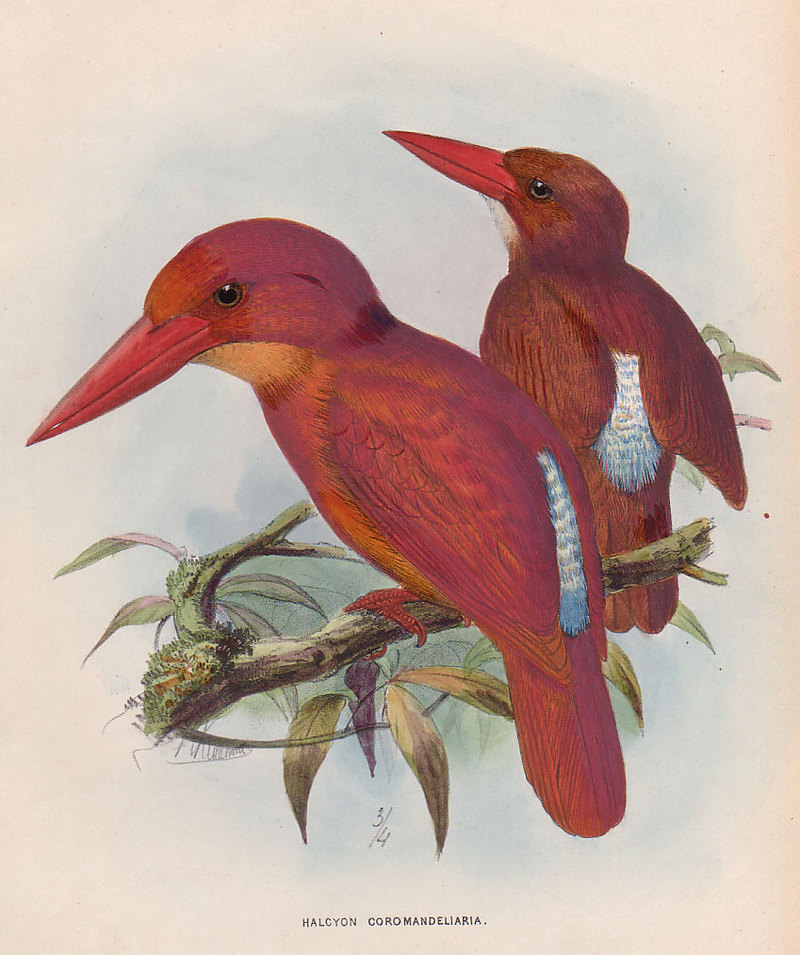|
| Query: bird | Result: 2611th of 32675 | |
Ruddy Kingfisher (Halcyon coromanda) - Wiki
| Subject: | Ruddy Kingfisher (Halcyon coromanda) - Wiki
| |

| Resolution: 849x1014
File Size: 168429 Bytes
Upload Date: 2007:08:19 23:25:30
|
Ruddy Kingfisher
From Wikipedia, the free encyclopedia
[Photo] Ruddy Kingfisher (Halcyon coromanda). Ruddy Kingfisher (Halcyon coromanda) by Keulemans. Source: Richard Bowdler Sharpe Family of Kingfishers, published from 1868 to 1871. Author Keulemans and Bowdler Sharpe
The Ruddy Kingfisher (Halcyon coromanda) is a medium-sized tree kingfisher which is widely distributed in east and southeast Asia, ranging from South Korea and Japan in the north, south through the Philippines to the Sunda Islands, and west to China and India. It is migratory, with birds in the northern part of the range migrating as far south as Borneo during winter. Locally common in southern parts of its range, the Ruddy Kingfisher is rare in Japan, where it is highly sought after by birders. Ruddy Kingfishers inhabit forested areas from the temperate to tropical zones, often in thick jungles and rainforests.
Reaching approximately 25cm, the Ruddy Kingfisher has a very large, bright red bill and equally red legs. The body is rust red, generally deepening to purple at the tail. There is little sexual dimorphism though some sources state that male birds are somewhat brighter in plumage.
Like other kingfishers, Ruddy Kingfishers generally feed on fish, crustaceans, and large insects, though in areas with less running water, they are known to take frogs and other amphibians. Due to its preference for heavily forested areas, the kingfisher's high, descending call is more often heard than the bird itself is seen, and these birds generally travel singly or in pairs.
The binomial name recalls the Coromandel Coast of India.
http://en.wikipedia.org/wiki/Ruddy_Kingfisher
| The text in this page is based on the copyrighted Wikipedia article shown in above URL. It is used under the GNU Free Documentation License. You may redistribute it, verbatim or modified, providing that you comply with the terms of the GFDL. |
|
^o^
Animal Pictures Archive for smart phones
^o^
|
|